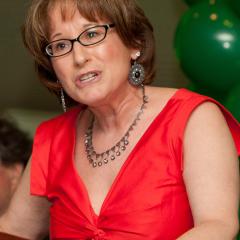
imagine that we were and are all standing at Sinai
Until early in my synagogue involvement, Shavuot meant a Jewish holiday when you ate blintzes. I vaguely understood that Shavuot had something to do with God and Torah at Mt. Sinai. I suspect that this is the situation for most Reform Jews.
Unlike its sister festivals Passover and Sukkot, there’s nothing to build and no special candelabra on Shavuot and other than candle lighting and Kiddush and lighting a yizkor candle, there really are no unique home rituals. Even eating blintzes and cheesecake has an unclear relationship to the festival. Also, Shavuot typically falls after our supplemental religious schools close and synagogue calendars begin to wind down for the summer.
It’s the very lack of physical doing that makes Shavuot, which celebrates the Jews’ being given Torah at Mt. Sinai 50 days after Passover, an exercise in extreme mental imaging, intellectual enterprise, spirituality, and diversity.
Shavuot marks the imaginative transition from soul-numbing slavery to a life filled with God-centered awareness. During Passover, especially during the seder, we use food and ritual moments to imagine ourselves leaving Egypt. Our Passover mantra is that “in every generation each of us must see ourselves as being taken from Egypt.” The weeks leading to Shavuot give us the same chance to expand our imaginations.
If we’ve counted the omer, to borrow a phrase, the Jewish advent calendar, we could have imagined ourselves on a spiritual journey. Each day as we counted, we prayed to be cleansed of the spiritual schmutz that keeps us from knowing God and our highest selves. It’s not just that God gives us the gift of Torah; even more, it’s that we get ready to accept the gift. (insert Cantor Pierre Pinchik, Sefiras haomer https://www.youtube.com/watch?v=9NHChlgHRaA)
On Shavuot we imagine that we were and are all standing at Sinai. Not by our individual selves, but as a community. Use your imagination: what was it like to be at Sinai thousands of years ago? What’s it like right now? Are you there? Are you laughing together? I sometimes imagine the moment at Sinai as a combination of tent revival and family get together. (insert Debbie Friedman, 613 Commandments https://www.youtube.com/watch?v=3ZAi_HvPXBU)
Shavuot is all about community and our enormous diversity. We’re all standing together at Sinai, from the most secular Jew to the most ritually observant man, woman, and newborn. God gave Torah to all of us, simultaneously in 70 different languages so that everyone could understand. In modern language terms, what we received at Mt. Sinai was a massive umbrella wide enough to welcome all Jews. (insert g-dcast Shavuot https://www.youtube.com/watch?v=kq4h3Opy-Xc)
Welcoming each other, respecting our diversity, makes us take each other seriously. Once we see each others’ eyes and faces, we recognize our humanity and encourages our need for mutual security. We realize that each of us is responsibility for our community. That’s what happens after gigantic earth-shattering experiences. We’ve held on to each other during the thunder and lightening, and we’ve come through that time as one community. Kol Yisrael arevim zeh bazeh, all Jews, all Israel, are responsible for each other. (Insert mp3: Kol Yisrael, Eric Gurvis/Miles Barel, The Complete NFTY Recordings 1972-1989, Volume 2)
Even the dairy food of choice has deeply spiritual roots. Cheesecake and blintzes are particular favorites, of course, and they are reminders of our beloved Israel, overflowing with milk and honey. They are symbolic of the purity of dairy animals (which do not need to be slaughtered to give us their food) and our first physical food nourishing us as infants that becomes our first spiritual food fed to us in the wilderness after our encounter with the Holy One at Sinai. (insert Nina Simone, Eretz Zavat Chalav U’dvash https://www.youtube.com/watch?v=YBAAkJyEhlA&list=RDYBAAkJyEhlA)
Chag sameach!
Cantor Penny Kessler
Cantor Penny Kessler has served the United Jewish Center in Danbury, Connecticut, since 1995.
Cantor Kessler believes that Judaism offers a path and a guide to holiness and an awareness of God in our lives. Her vision as a cantor is to use Jewish music and texts to help Jews to find their own Jewish paths to holiness and God awareness, to develop relationships within the Jewish community, and welcome new generations of Jews into the Jewish family. All her work is focused on those goals, whether it is directing the UJC Adult Choir, sitting on the floor teaching music to kids in the religious school, presenting continuing ed programs and field trips for grownups, or developing – along with the lay leadership – periodic meditation Shabbat services, the yearly Tashlich service, the UJC’s online presence, and other initiatives.
A member of the Executive Board of the American Conference of Cantors, Cantor Kessler served on the faculties of URJ Eisner and Crane Lake Camps as well as NFTY-NE Institutes. In 2007, she and a cantorial colleague were the first cantors to be invited to participate in the URJ’s Eilu v’Eilu project, discussing the Jewish challenge of difficult musical texts such as the Hallelujah Chorus from Handel’s “Messiah.” Her devar Torah on parashat Eikev, “For Our Own Good,” was included in the URJ publication, “Living Torah: Selections from 7 Years of Torat Chayim.”
Cantor Kessler makes her home with her husband Stanley in Bethel, and they are the proud parents of Alaina, Warren, and Harrison – all of whom grew up at the UJC.

